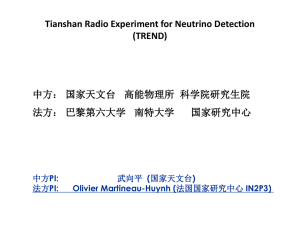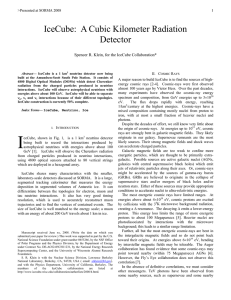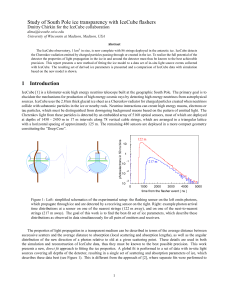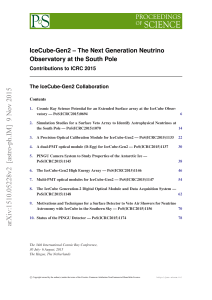Buried a mile deep in Antarctic ice, the IceCube and amplifiers
advertisement
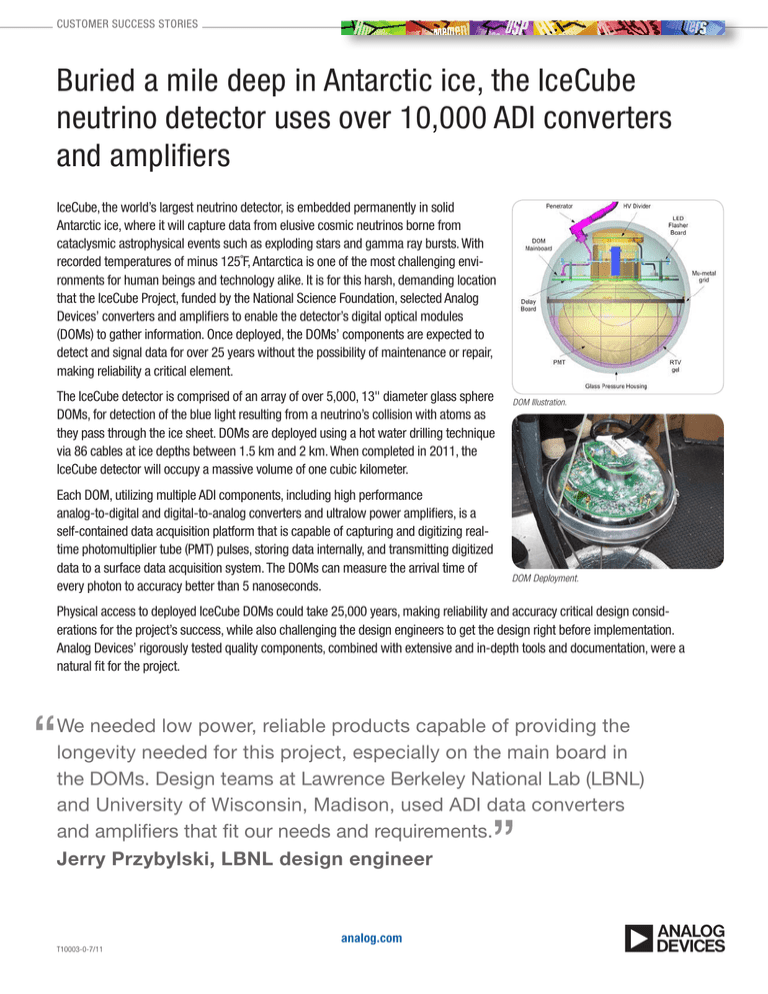
CUSTOMER SUCCESS STORIES Buried a mile deep in Antarctic ice, the IceCube neutrino detector uses over 10,000 ADI converters and amplifiers IceCube, the world’s largest neutrino detector, is embedded permanently in solid Antarctic ice, where it will capture data from elusive cosmic neutrinos borne from cataclysmic astrophysical events such as exploding stars and gamma ray bursts. With recorded temperatures of minus 125˚F, Antarctica is one of the most challenging environments for human beings and technology alike. It is for this harsh, demanding location that the IceCube Project, funded by the National Science Foundation, selected Analog Devices’ converters and amplifiers to enable the detector’s digital optical modules (DOMs) to gather information. Once deployed, the DOMs’ components are expected to detect and signal data for over 25 years without the possibility of maintenance or repair, making reliability a critical element. The IceCube detector is comprised of an array of over 5,000, 13" diameter glass sphere DOMs, for detection of the blue light resulting from a neutrino’s collision with atoms as they pass through the ice sheet. DOMs are deployed using a hot water drilling technique via 86 cables at ice depths between 1.5 km and 2 km. When completed in 2011, the IceCube detector will occupy a massive volume of one cubic kilometer. Each DOM, utilizing multiple ADI components, including high performance analog-to-digital and digital-to-analog converters and ultralow power amplifiers, is a self-contained data acquisition platform that is capable of capturing and digitizing realtime photomultiplier tube (PMT) pulses, storing data internally, and transmitting digitized data to a surface data acquisition system. The DOMs can measure the arrival time of every photon to accuracy better than 5 nanoseconds. DOM Illustration. DOM Deployment. Physical access to deployed IceCube DOMs could take 25,000 years, making reliability and accuracy critical design considerations for the project’s success, while also challenging the design engineers to get the design right before implementation. Analog Devices’ rigorously tested quality components, combined with extensive and in-depth tools and documentation, were a natural fit for the project. We needed low power, reliable products capable of providing the longevity needed for this project, especially on the main board in the DOMs. Design teams at Lawrence Berkeley National Lab (LBNL) and University of Wisconsin, Madison, used ADI data converters and amplifiers that fit our needs and requirements. Jerry Przybylski, LBNL design engineer T10003-0-7/11 analog.com
